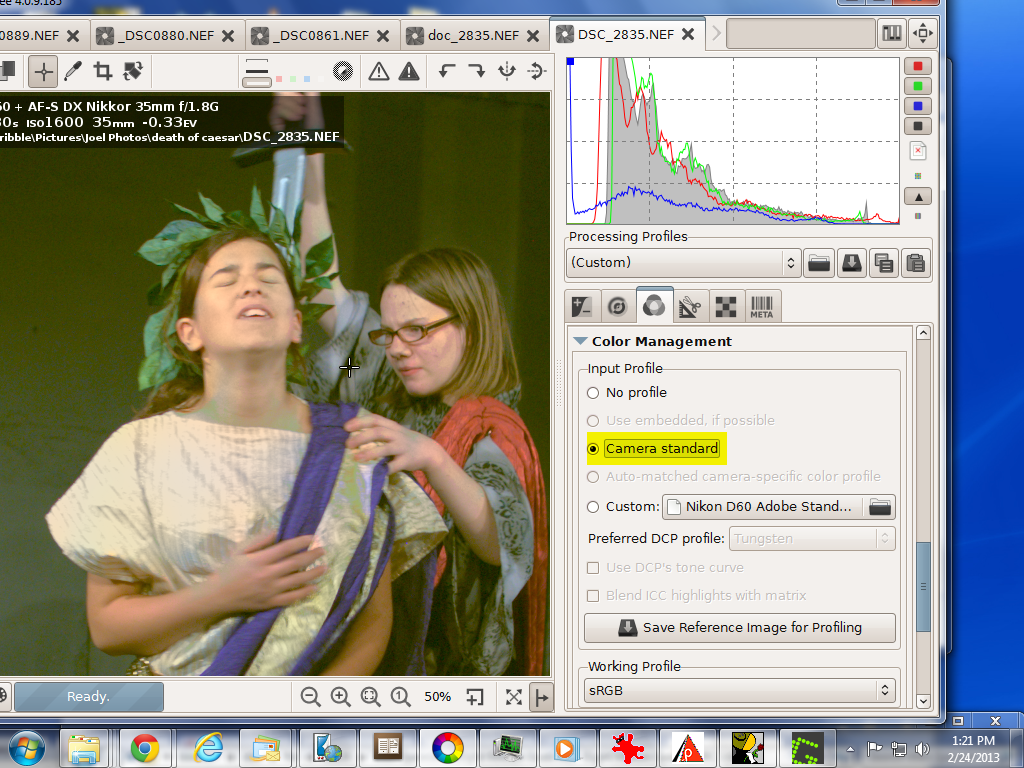Camera Standard Vs Adobe Standard
Posted By admin On 24/02/18

Bonus points for spotting that Adobe Standard not only loses warmth, but also does a steller job enhancing chromatic aberration. The Little Book Of Productivity Scott Young Pdf. The fun never stops. One of the more tucked away features of Lightroom is the Camera Profile dropdown. It is right at the bottom of the develop module, under Camera Calibration. The Adobe Standard setting (which you will see if you have not made any changes to camera calibration) gives you ‘untouched RAW’; that is, without the effects of any camera post processing (colour correction, sharpening, etc). Lightroom Camera Calibration This is usually an accurate rendition of the raw data that came from your camera’s sensor and amplifier stage, but there are three potential problems; • The final RAW will not look like the image you saw in your LCD in-camera.
Lightroom automatically imports every RAW image as Adobe Standard. If you want to change it to Camera Standard, you have to do so in the Develop module or change your.
That may be fine for many people (especially for those who use the optical viewfinder and have no time for that lying, overly vivid LCD!), but if you’ve ever watched as Lightroom imports your RAW images and seen how the initial colourful and contrasty thumbnails end up less contrasty and colourless then read on. • The initial RAW image appearance is rarely where you want to end up. Sure, it is more versatile than a JPEG for post processing, but the default RAW can be a little neutral and lacking in contrast and colour. This may lead to much more work in post processing, or worse, imply ‘this is how the scene looked, don’t dare change me’! It would sometimes be useful to get Lightroom to start with something close to one of your camera styles (portrait, landscape, etc), or the colour rendition of your camera LCD (I can hear the purists muttering darkly about LCD accuracy again, but bear with me!). • Adobe Standard can be incorrect.
For some cameras (especially for non-Canon/Nikon), Adobe don’t always get it right. I’m a Sony user, and whenever I see Sony vs. Canon review head-to-heads, I wince when I read conclusions of the form ‘Sony lacked colour accuracy’.
It may well be closer to the truth that the reviewer had Camera Raw/Lightroom set to that pesky and somewhat inaccurate Adobe Standard for the Sony! Robin Guthrie Carousel Rar. Yes, I know Adobe create their profiles under strictly controlled lighting, and using much larger colour-range swatch cards than most other third parties use, but all that doesn’t appear to fit with the results I get.
Even if you are happy with Adobe Standard for your camera (and many are), there are a couple of workflows you might miss unless you know about camera calibration; • You want to concentrate on just taking good compositions in the field, and worry about styles later. For example, you might be taking pictures of the kids in the park. You don’t want to worry about whether you should be using the portrait style or the landscape style when taking a particular shot. By shooting RAW and using the camera calibration dropdown in Lightroom, you can change styles after the event. • You want to use your camera’s styles, but also want to use camera RAW.